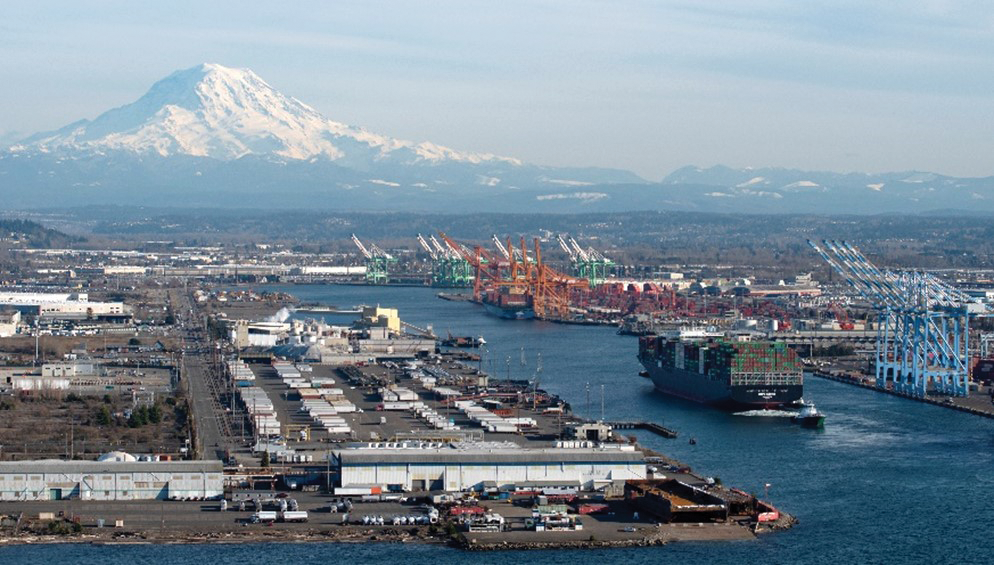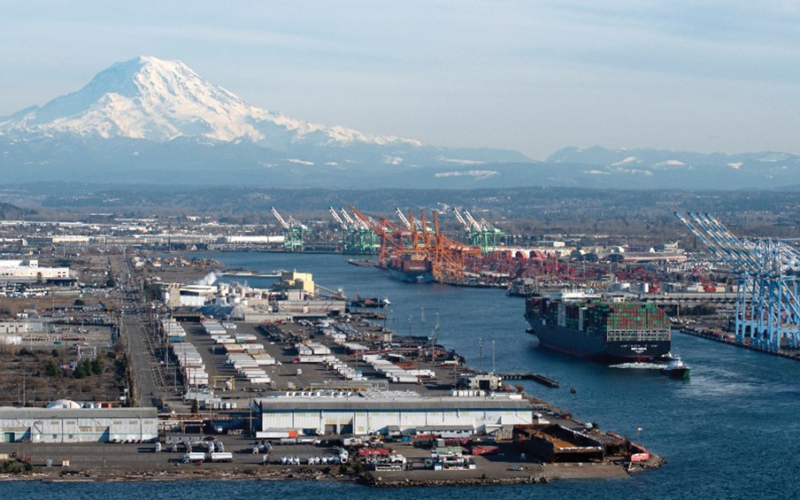
In 2015, the Federal Maritime Commission approved a plan that authorized the creation of the Northwest Seaport Alliance (NWSA) by the ports of Tacoma and Seattle.
The Alliance established a framework for, among other goals, the joint management of the ports’ marine cargo operations and the design and execution of marketing strategies to build business volumes.
December 2023 container volumes at both ports reached 263,171 twenty-foot equivalent units (TEUs), with total volume increasing 14 percent over December 2022. Full imports for the month increased 3 percent and full exports increased 45 percent compared to 2022.
With business slowly improving and the containerships navigating in the transpacific trades continuing to grow in size and capacity, the NWSA is working closely with the U.S. Army Corps of Engineers (USACE) to enhance the infrastructure at both ports to maintain a competitive advantage.
To that end, both ports have completed integrated feasibility studies and environmental assessments on a pair of major projects – the deepening of both the Blair Waterway in Tacoma and the West Waterway in Seattle.
The results of the assessments indicated that “Seattle would significantly enhance the competitiveness of the gateway, enabling the waterways to meet the heightened draft requirements of larger ships and ensuring they can continue to support international trade and trade-dependent jobs across our region,” according to the NWSA.
“The U.S. Army Corps of Engineers is proud to partner with the Port of Tacoma and the Port of Seattle in making these projects a reality,” said USACE-Seattle District commander Col. Kathryn Sanborn. “I look forward to our continuing partnerships as work through the design phase and beyond, helping Pacific Northwest commerce, which will have a positive impact to the region and nation.”
Port of Tacoma
The Port of Tacoma Blair Waterway Deepening project’s scope includes the design of the navigation channel deepening along with minor footprint modifications sediment characterization, ship simulation, and the further consideration of the beneficial use of dredged material at the East Commencement Habitat Opportunity, formerly the Saltchuk, area.
“This deepening project fits into our comprehensive work to modernize the Blair Waterway which has included the Husky Terminal Modernization project, crane raising at Pierce County Terminal and new Super Post-Panamax cranes located at Husky and Washington United Terminals,” said Port of Tacoma Commission President and NWSA Co-Chair, Deanna Keller.
The Port of Tacoma and The Northwest Seaport Alliance, she said, “are committed to ensuring our facilities remain competitive and can accommodate the largest and most advanced ships in the trans-Pacific trade.”
Port of Seattle
Last September, the Port of Seattle executed a design agreement with the USACE for the West Waterway Channel Deepening Project. This project “aims to deepen the navigation channel to -57 feet mean lower low water (MLLW) to keep the Seattle Harbor fully accessible to deep-draft vessels.”
The project’s scope includes sediment characterization, engineering, and the preparation of plans and specifications for construction.
“The West Waterway Channel Deepening Project is critical to the future competitiveness of our gateway and driving economic activity across our region,” stated Port of Seattle Commission President and NWSA Co-Chair Sam Cho.
“We’ve made significant investments in the modernization of Terminal 5, including strengthening the berths and adding six new Super Post-Panamax cranes alongside our terminal partners,” said Cho. “The deepening ensures that ultra-large vessels have unrestricted access when calling at Terminal 5 and that cargo and job opportunities remain strong in our harbor for decades to come”

